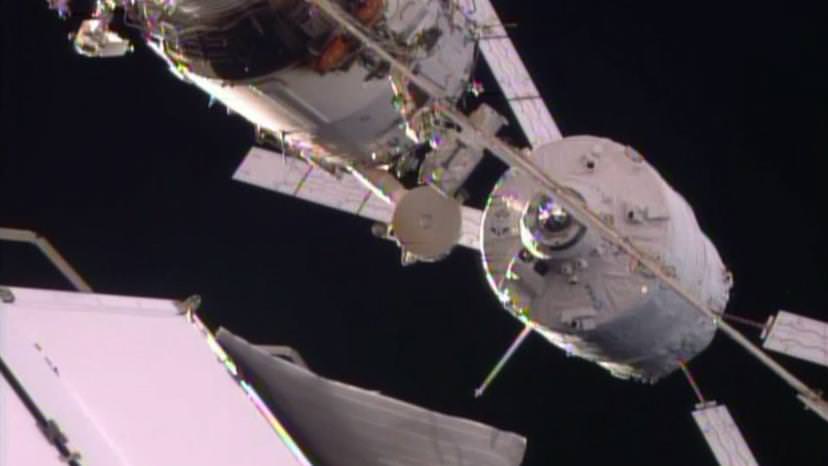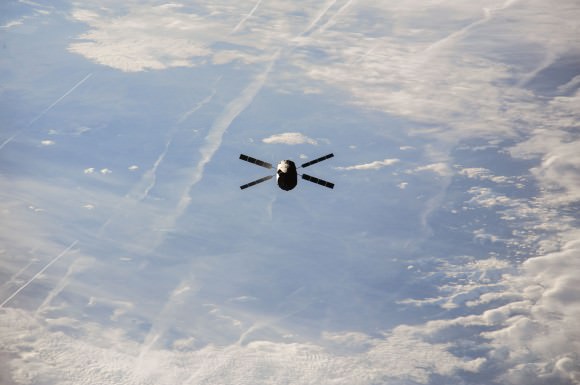It took two weeks to get there, but all indications is it was worth the wait. The final automated transfer vehicle of the European Space Agency successfully docked with the International Space Station today (Aug. 12) at 9:30 a.m. EDT (1:30 p.m. UTC) — right on time.
The cargo vehicle has about seven tons of stuff on board, ranging from science experiments to fresh food. The astronauts always enjoy it when fruit and other new food arrives in these shipments, given so many of their meals are freeze-dried.
Also on board was a new rendezvous system manufactured by Canadian company Neptec, which is testing out new ways of docking for future cargo vehicles. And when it’s time for Georges Lemaître to leave the station around January 2015, sensors inside will monitor its planned destruction to make future cargo vehicles better equipped to survive re-entry.
Georges Lemaître left Earth July 29 from French Guiana, as did its four predecessors. The series of ATVs started in March 2008 when Jules Verne departed to resupply the Expedition 16 crew. The other vehicles were called Johannes Kepler, Edoardo Amaldi and Albert Einstein.
The new vehicle will be opened up on Wednesday. It will be a busy week for cargo vehicles at the station, as the privately constructed Cygnus spacecraft (from Orbital Sciences) is expected to leave the station on Friday at 6:40 a.m. EDT (10:40 a.m. UTC). Both Alexander Gerst (ESA) and Reid Wiseman (NASA) will release Cygnus using Canadarm2, a robotic arm on station.




